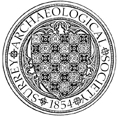Wyphurst Road, Cranleigh
Evaluation by M Dover of SCAU prior to an application for residential development. A large number of features were revealed, including ditches, gullies, postholes, pits, wall foundations and robber trenches, most appearing to date from the late 1st/early 2nd century Romano-British period. Some Iron Age artefacts and features were also identified, suggesting that the settlement had earlier origins. It is unclear as to the exact nature of the site, although the evidence to date is consistent with the activities involved in the construction and operation of a small farmstead.


